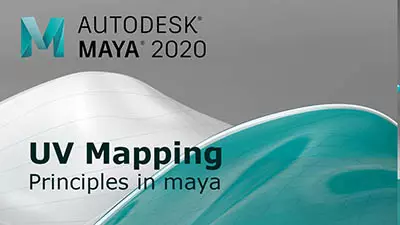Introduction to Maya - Modeling Fundamentals Vol 1
This course will look at the fundamentals of modeling in Maya with an emphasis on creating good topology. We'll look at what makes a good model in Maya and why objects are modeled in the way they are.
#
1
15-02-2008
, 09:24 PM
Subscriber
Join Date: Nov 2007
Join Date: Nov 2007
Location: london
Posts: 2
rigging a character in maya.
I am following the official maya2008 animation handbook as a guide and am having probably applying the pole vector constraint to the armIKhandle. As soon as I do this the RotateX of the hand goes to -180 and the rotateZ goes to 1.14. Im not sure why this is or even if i really need a pole vector constraint for effective animation?
any words of advice or wisdom?
would be much appreciated!!
thanks
nige
the power of imagination makes us infinite.
#
2
06-03-2008
, 09:57 AM
Pole vector contraints are useful for elbows and knees.
This is how I use them. First create your joint chain, in the example shown I have created a simple leg. Then create an ikRPsolver from the hip to the ankle. Next I create a locator in front of the knee. Now select the locator and the IK handle and create a Pole Vector contraint. Now click on the locator and move it in the X-axis, hey presto a knee control!
Do the same thing for the arms and you have elbow controls.
If you look closely at the channel box you will see that Pole Vector is highlighted in blue denoting the Pole Vector constraint.
Hope this helps.
Tickety boo and ta ta for a bit...
Gazzamataz
https://www.gazzamataz.com
Posting Rules Forum Rules
Similar Threads
Rendering Problem
by NoxRequiem in forum Lighting & Rendering replies 6 on 01-04-2011
why my rigging system & control system of MAYA 5 doesnt work properly in MAYA 7?
by rroohhiitt in forum Maya Basics & Newbie Lounge replies 2 on 02-07-2006
Maya 4.5 Savvy or Maya Character Animation?
by gazzamataz in forum Maya Basics & Newbie Lounge replies 14 on 19-02-2003
Maya | Character Rigging and Animation
by Ian in forum Maya Basics & Newbie Lounge replies 11 on 22-10-2002
AM Rigging vs Maya Rigging
by gazzamataz in forum Animation replies 12 on 22-09-2002
Topics
Free Courses
Full Courses
VFX News
How computer animation was used 30 years ago to make a Roger Rabbit short
On 2022-07-18 14:30:13
Sneak peek at Houdini 19.5
On 2022-07-18 14:17:59
VFX Breakdown The Man Who Fell To Earth
On 2022-07-15 13:14:36
Resident Evil - Teaser Trailer
On 2022-05-13 13:52:25
New cloud modeling nodes for Bifrost
On 2022-05-02 20:24:13
MPC Showreel 2022
On 2022-04-13 16:02:13








